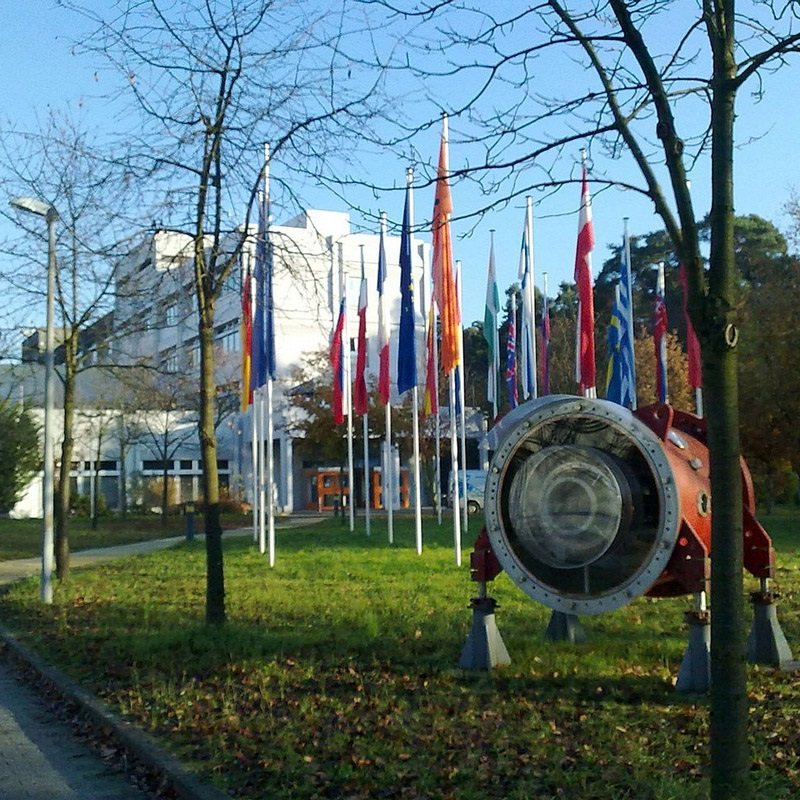Darmsztadt
110
Ds
Grupa
10
Okres
7
Blok
d
Protony
Elektrony
Neutrony
110
110
171
Ogólne właściwości
Liczba atomowa
110
Masa atomowa
[281]
Liczba masowa
281
Kategoria
Metale przejściowe
Kolor
Nie dotyczy
Radioaktywny
Tak
Named after the German city of Darmstadt
Układ krystalograficzny
Nie dotyczy
Historia
Darmstadtium was first created in 1994, at the Institute for Heavy Ion Research (Gesellschaft für Schwerionenforschung) in Darmstadt, Germany, by Peter Armbruster and Gottfried Münzenberg, under the direction of Sigurd Hofmann.
The team bombarded a lead-208 target with accelerated nuclei of nickel-62 and detected a single atom of the isotope darmstadtium-269.
The team bombarded a lead-208 target with accelerated nuclei of nickel-62 and detected a single atom of the isotope darmstadtium-269.
Elektrony na poszczególnych powłokach
2, 8, 18, 32, 32, 16, 2
Konfiguracja elektronowa
[Rn] 5f14 6d8 7s2
Darmstadtium has no stable or naturally-occurring isotopes
Właściwości fizyczne
Stan skupienia
Nieznane
Gęstość
- g/cm3
Temperatura topnienia
-
Temperatura wrzenia
-
Ciepło topnienia
Nie dotyczy kJ/mol
Ciepło parowania
Nie dotyczy kJ/mol
Ciepło właściwe
- J/g·K
Ilość w skorupie Ziemi
Nie dotyczy
Ilość we Wszechświecie
Nie dotyczy

Opis Obrazu: Wikimedia Commons (Commander-pirx)
Pierwiastek został odkryty w Instytucie Badań Ciężkich Jonów w Darmstadt, Niemcy
Numer CAS
54083-77-1
Numer CID PubChem
Nie dotyczy
Właściwości atomowe
Promień atomowy
-
Promień walencyjny
128 pm
Elektroujemność
-
Energia jonizacji
-
Objętość molowa
-
Przewodność cieplna
-
Stopnie utlenienia
6
Zastosowania
Darmstadtium is used for scientific research purposes only.
Darmstadtium is harmful due to its radioactivity
Izotopy
Stabilne izotopy
-Niestabilne izotopy
267Ds, 268Ds, 269Ds, 270Ds, 271Ds, 272Ds, 273Ds, 274Ds, 275Ds, 276Ds, 277Ds, 278Ds, 279Ds, 280Ds, 281Ds